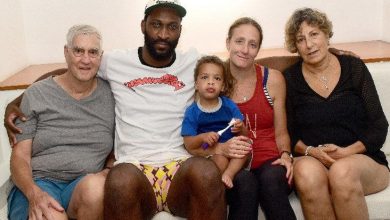Patrons thrilled by ‘Broadway Comes to Brooklyn’
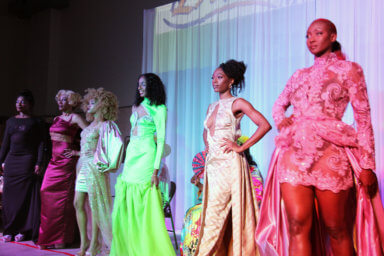
Patrons were overwhelmingly thrilled with last Saturday evening’s production of La faVon Theater, The Musical — Broadway Comes to Brooklyn, hosted by Laramade, at Grace Hall on Dewitt Avenue in Brooklyn.
The production, dubbed “Broadway Comes to Brooklyn”, was produced by Laramade and directed by the “Dream Team” of Guyanese Launce Northe, playwright, dancer, producer and director; Oral Welshman, choreographer, dancer model coach, producer and director; and Dr. Rose October, dancer, choreographer, drama coach and director.
The packed audience expressed deep satisfaction with the unfolding of the production played by the 25-member cast, expressing rave reviews.
“This show needs to go on the road,” exclaimed Verna Walcott-White, of Jamaica, Queens.
Brooklyn resident Guyanese Eric Joseph said: “The show has been outstanding! An exquisite portrayal of the African American/African Diaspora cultural experience.”
Trinidadian Karen Clapperton, another Brooklyn resident, said: “It was great show, and it needs to be done in a bigger way in Brooklyn.”
Guyanese Claire Patterson-Monah, of St. Albans, Queens said: “It was super; a 9.5”, with 10 being the highest on a 0-10 scale.
Barbadian Thelma Brathwaite said the producers and the cast must “be commended for this awesome work.
“This was, indeed, Broadway in Brooklyn,” she said.
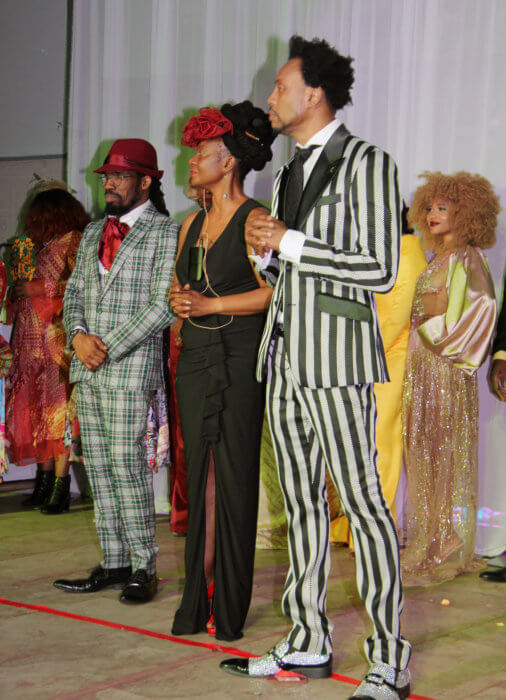
Guyanese, Unita Clarke-St. Romain, of Queens, said the production was “professionally done,” adding: “I am glad that it started punctually at 8:00 p.m., as advertised.”
Colleen Sears said that she has “seen many Broadway shows, and this is a Broadway show in Brooklyn.”
Guyanese Junior Scotland, of Brooklyn, said, “it was the kind of ‘food’ that is needed in Brooklyn.
“It was a welcome change to the menu, and you need to serve this up on a regular,” he said.
Northe said: “The cast delivered,” adding that the production was cathartic for him because of his feelings about the contributions of the Black and Brown people who are treated as second class citizens, hence his desire to celebrate their achievements.
Welshman, his compatriot, described the production as “excellent.”
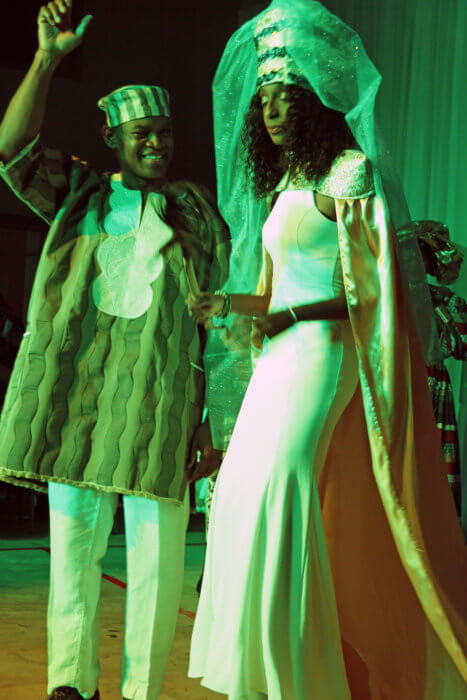
“It was great to see the vision come to light, and the cast played their part as scripted,” he said, adding that it was “a dream come true.”
Dr. October, another Guyanese, said she was “confident the cast of professionals and non-professionals would deliver,” adding that “they did not disappoint.
“I felt that this production was much needed in the heart of the Brooklyn community, and indeed, it was well received.
According to Northe, “the production explores the impact of dance, music, and fashion of African Americans.
“The cast journeys through the lens of these three themes, paying attention to the Black experience and the zeitgeist of the period,” he said.
In addition, Northe said “the hope is to bring some healing to the community since the experience of the George Floyd murder, the pandemic and the insurrection of Jan. 6, 2020.”
“Broadway Comes to Brooklyn” has two acts and four scenes: each act with two scenes.
Act I Scene I is entitled “Roots”; Act I Scene II is entitled “An Archetype of The Strong Black Woman”; Act II Scene I is entitled “Rebellion”; and Act II Scene II is entitled “Black Couture.”
Each scene begins with a narration that prepared the audience for what is to come.
With the exception of the second narration, done by Dr. October, the other narrations were done by Ervin Washington, who was a consultant on the non-theatrical aspects of the production.
“Roots” – Act I, Scene I’s narration – starts with “He who controls the past, controls the future. He who controls the present, controls the past.”
Northe’s quote speaks to “the importance of understanding the legacy of our ancestors, where we have come from as Black and Brown people, and where we are headed; their influences on everyday life of today.”
At the beginning of the production, paying homage to our ancestors, was done through libation, which was followed by The Message by Paul Hawker, also known as Pablo G.
Within Scene I was also The Wedding that was portrayed through fashion and dance – “in essence, the role of fashion and dance in community activities as by our ancestors,” Northe said.
Cast members who played the roles of bride (Ghenet Charles), groom (Courtney Noel) and wedding attendees, displayed designs by Guyanese fashion designer, Denise Jennings, and choreography by Welshman, with costume by Clive Prowell.
“An Archetype of The Strong Black Woman” – Act I Scene II’s – narration began with “The most common way a woman gives up her power is by thinking she does not have any.”
This scene was guided by monologue ideas taken from Nina Simone’s, “Four Women”, in which Dr. October portrayed Serafina, Pixie Bender as Safronia, Marcia Piggott as Sweet Thing, and Michelle Carr as Sapphire. They were accompanied by Erwin “Sir Flantis” Edwards on saxophone.
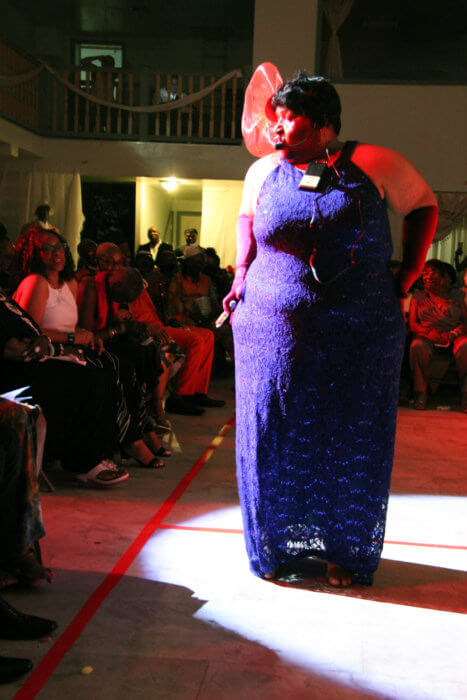
The other part of this scene was “The Work of The High Priestess”, portrayed by Jackie Brathwaite.
Cindy Gonsalves played opposite her, as the woman who sought help to keep her man, and who also sang her version of Vikki Carr’s, “It Must Be Him”.
This scene ended with Gonsalves and Northe’s dance duet to Nina Simone’s “I Put a Spell on You”.
Following this, there was a brief intermission, with live entertainment by Pablo G, and the pulling of two door prizes, complements of Edgar Henry of E.N.G. Caribbean Vision Center in Brooklyn.
“Rebellion” – Act II Scene I’s – narration began with “If I am not what you say I am, then you are not who you think you are”.
The focus of this scene is on the 70s era, with Matthew Thomas performance as a club singer of Isaac Haynes, “Do Your Thing”.
Thomas was supported by club goers: Washington, Kijana Lewis, Northe, Welshman, Paul Charles, Raymond Barrow, Deborah Daniels, Marcia Piggott, Carr, Bender, Gonsalves, Meleesa Payne, Shaina Sanchez and Shantell Jones.
Fashion was a big part of this scene with the big afros, platform shoes, high top boots, crochet “hot pants”, tank tops, miniskirts and dresses, along close fitted shirts (for men).
The crochet fashions were designed by Barbadian Jackie Brathwaite.
The “Theme from Shaft” was used for Welshman’s choreography, danced by Lewis, Northe, Welshman, Charles and Barrow.
This scene closed with Sam Cooke’s “A Change is Gonna Come” sung by Washington.
“Black Couture” – Act II Scene II’s – narration began with “Black high fashion began with “church style” in the South.
“Every Sunday, slaves put on their Sunday best for church service”, production says.
This scene came to life with the four fashionable church women: Karen Smith, Marsha Greene, Carr and Bender.
They were well-clad, with fashion ensembles completed with fascinators and big hats.
The actresses entered the stage singing “Wade in the Water” with lead by Carr, then segued into a dance, with soloist Dr. October joining them.
Dr. October then brought in the liturgical dancers: Brathwaite, Lewis, Charles and Jones.
As mentioned in the narration, fashion began in the church, and Denise Jennings’s Couture designs were showcased by models Daniels, Brathwaite, Payne, Gonsalves, Sanchez and Charles.
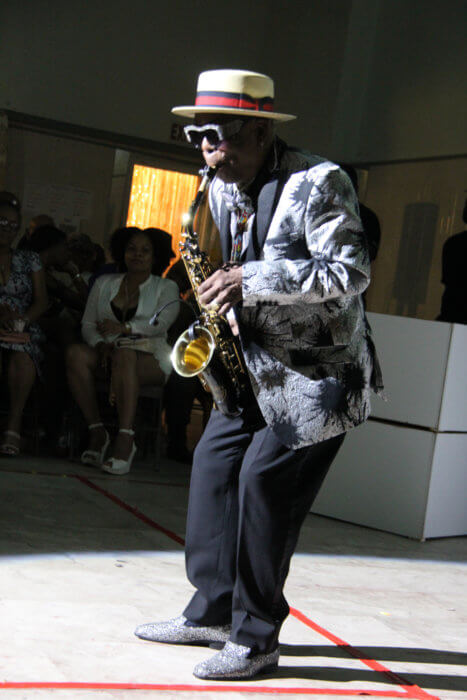
This scene ended with a transition to the bar, with live sax rendition of “In the Mood” by Sir Flantis.
There, Barrow played the “Big Spender” that was sung by Piggott, and Donna Powell played “Big Mama”, who sang, “When You’re Good to Mama.”
The bartender was played by June Persaud of Bartunera, the company that provided complementary wine for the event, and the women in the bar were Gonsalves, Brathwaite, Piggott, Payne and Jones.
Sir Flantis played his sax rendition of Duke Ellington’s “Take the A-train” for the cast’s transition to the Cotton Club on Lexington Avenue, then Thomas sang his version of Herb Alpert’s “Puttin’ on the Ritz”.
At curtain call, Dr. October presented Northe and Welshman with citations issued by Sen. Roxanne Persaud, the Guyanese-born representative for the 19th Senate District in Brooklyn.
Stephan Lamazon, also known as DJ Silvertraxx, a technical crew member, was instrumental in providing the equipment for light and sound for this production, and worked with the other techs, Kishore Seunarine with sound and Malcolm Hall with lights.
Clive Prowell, the stage manager, transformed the stage with his mastery at stage and costume designs. Burgette Williams and Kacey Kilkenny worked as part of the stage crew.
The producers/directors thankee the donors, patrons, cast and crew for “making this the success it was.”
“Special thanks to Karen and Colin Clapperton for their generosity in providing rehearsal space and some props for the production, and to Caribbean Life Newspaper for covering this story.”




